Have you ever wondered if your indoor cat dreams of a more exciting life beyond the windowpane? Many cat owners assume their feline friends are perfectly content lounging inside, but is that really the whole story? Today, we’ll unravel the science behind cat boredom , highlight surprising signs your indoor cat could be craving more engagement, and provide actionable solutions to create a more fulfilling life for your pet. Read on to learn how to prevent boredom and keep your bored cat healthy and happy—some of these tips might surprise even the most seasoned cat parent!
Do Cats Get Bored Indoors? Challenging What Pet Owners Think
One of the most debated questions among cat owners is simple yet profound: Do cats get bored indoors? While many people believe that a comfortable home with regular meals and a cozy bed is enough, studies show that even cats with all their necessities met can still experience boredom . Unlike their wild cousins or even outdoor cats, indoor cats are more prone to restlessness due to a lack of mental stimulation and environmental challenges.
Think about how intelligent animals like cats have natural instincts to hunt, explore, and problem-solve. When those needs aren’t fulfilled, an indoor cat may start to show signs of boredom and even develop health or behavior issues. However, recognizing these signs isn’t always straightforward—a cat bored or a bored cat often behaves in subtle or unexpected ways. Let’s dive into what science and veterinarians say about cat boredom and what it means for your feline friend.
The surprising truth about cat boredom: What science and veterinarians say
Research confirms what many veterinary professionals have long suspected: cats are highly intelligent animals that require more than just food to thrive. A lack of routine enrichment, environmental changes, and interaction can result in a bored cat , characterized by withdrawn behavior, destructive tendencies, or excessive sleeping . According to veterinary experts, this kind of boredom isn't just a minor inconvenience—it can escalate into stress, anxiety, or even depression in indoor cats.
Veterinarians stress the importance of recognizing the distinction between a cat’s natural rest habits and the red flags of cat boredom . Routine changes, new toys, and play opportunities are essential, but so is understanding what’s “normal” for your indoor cat . By challenging common assumptions about why cats appear to nap all day or occasionally act out, cat parents can take the crucial first step in creating a more stimulating environment for their indoor companion.

| Bored Cat Behavior | Description |
|---|---|
| Excessive Sleeping | Cat sleeps far longer than typical |
| Over-Grooming | Licking or biting fur excessively |
| Destructive Behavior | Scratching furniture, knocking items |
| Overeating or Undereating | Sudden changes in appetite |
| Lethargy | Lacking interest in play or movement |
Spotting Cat Boredom: How to Know If Your Indoor Cat Is Bored
Understanding whether your indoor cat is bored can be challenging. Cats naturally spend a lot of time sleeping, but there are telltale behavioral clues that distinguish normal rest from signs your cat is bored. Watch for changes in playfulness, grooming habits, appetite, or even vocalizations. A cat is bored when they no longer show curiosity about activities that once excited them or when they develop patterns of destructive behavior, like scratching posts or chewing on objects.
If your cat used to chase after toys but now ignores them or seems lethargic even at times they normally play, it could be a sign of cat boredom .
Other indicators include a shift in sleep patterns, such as excessive sleeping during periods when your cat is usually active. It’s also important to compare your cat’s baseline habits to any new behaviors. Sudden over-grooming, loss of appetite, or repeatedly seeking attention in disruptive ways often signal more than just laziness—they could mean your feline friend is trying to cope with boredom or even underlying health issues. Paying close attention to subtle shifts in their routine or energy levels can make a critical difference.
Behavioral clues a cat is bored vs. normal resting habits
Distinguishing between a cat simply resting and a bored cat is all about noticing patterns. While cats are creatures of habit, they usually show bursts of energy and curiosity during their awake hours. If you find your cat engaging in destructive scratching , over-grooming, or fixating on a single activity, these may be troubling signs. Compare this to a typical resting period where your indoor cat is relaxed, responsive, and resumes play experiences when prompted.
Resting cats still respond to your presence—they’ll perk up at the sound of toys or approach you for petting. A bored or unstimulated cat, however, may retreat, ignore attention, or create their own “fun” by knocking things off shelves or getting into places they shouldn’t. If you notice excessive grooming or the emergence of new vocal habits, it’s essential to assess your cat’s environment for possible triggers of boredom and adjust accordingly.
"A bored cat often shows changes in behavior—watch for subtle shifts in their routine or energy levels," says Dr. Jessica Walker, feline behaviorist.
Key Signs Your Indoor Cat Is Bored: What Every Cat Parent Should Watch For
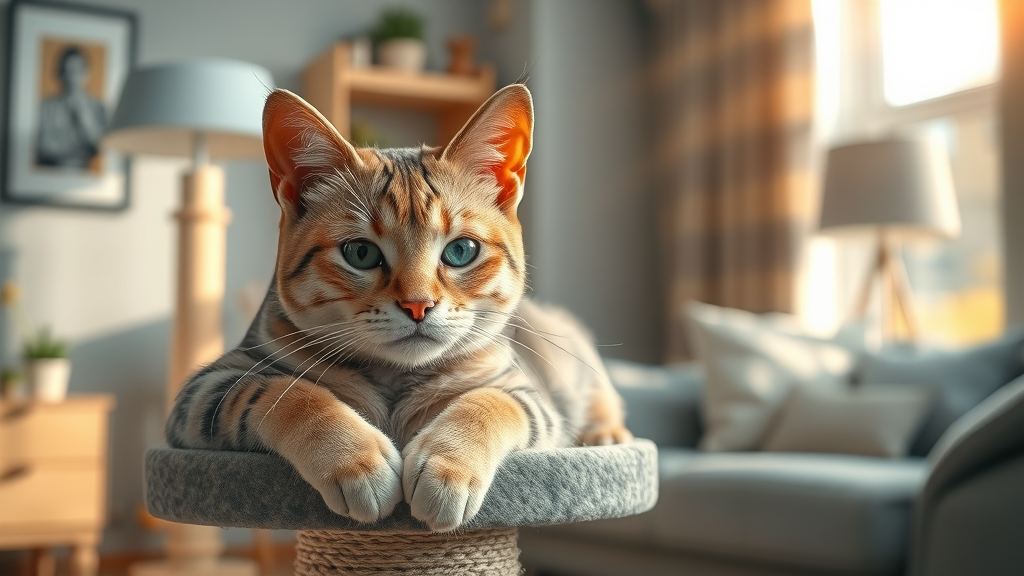
- Excessive sleep or sleeping during usual active hours
- Destructive scratching or biting
- Over-grooming or changes in grooming habits
- Loss of appetite or overeating
- Vocally demanding attention or meowing more
Is Your Cat Bored or Just Lazy? Distinguishing Normal vs. Bored Cat Behavior
It’s easy to confuse laziness with boredom in cats, but there are clear differences. While all cats enjoy lounging and can sleep up to 16-18 hours a day, excessive sleeping that interrupts playtime or normal engagement may signal a problem. If your indoor cat ignores toys, loses interest in play, or begins to display destructive tendencies, these are classic signs of boredom —not just relaxation. Additionally, a truly lazy cat remains content and healthy, while a bored cat’s quality of life declines without mental stimulation .
Other subtle shifts can provide clues. For example, a cat bored with their environment might overeat out of habit, while one just being lazy will eat as much as normal. Weight changes, increased vocal demands, and grooming issues are red flags that can indicate more than laziness—they’re often the early warning signs of boredom and stress. If you’re unsure, try introducing interactive toys or scheduled play sessions and observe your cat’s response. Positive changes confirm boredom was a root cause.
Why Indoor Cats Get Bored: Understanding Cat Boredom Compared to Outdoor Cats
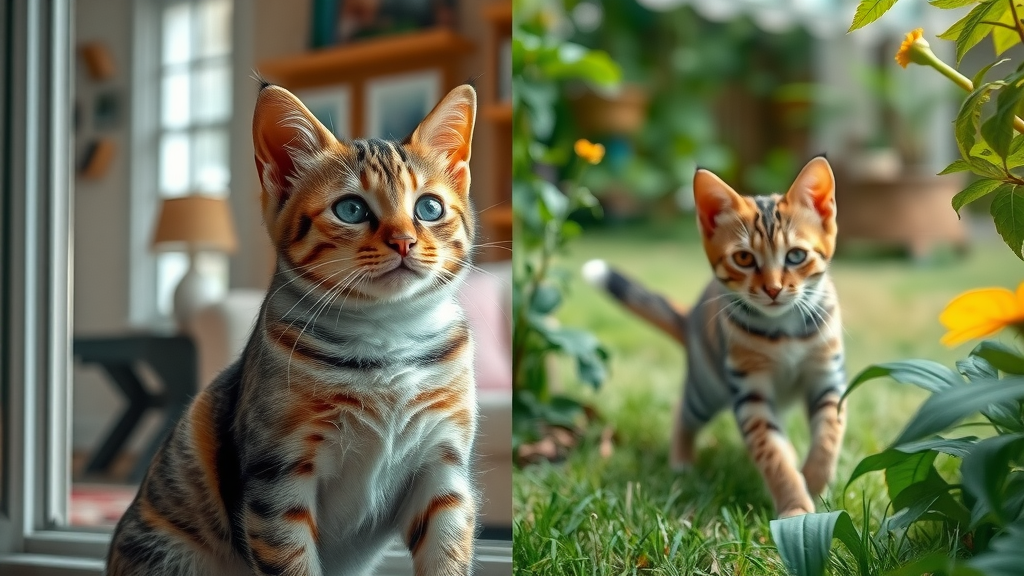
The contrast between indoor cats and outdoor cats shines a light on why boredom is a much bigger concern for pets who rarely venture outside. Outdoor cats enjoy ever-changing environments, new smells, and regular opportunities to exercise their natural instinct to hunt and explore. In comparison, indoor cats live in a steady, predictable world set by their owners.
This lack of novelty means even the most loved and cared-for indoor cat can experience boredom more frequently. The gap between stimulation and routine is striking: outdoor cats manage their own enrichment, while indoor cats rely solely on their families to prevent boredom . Understanding the differences between these lifestyles is critical for cat owners who want to create a balanced, stimulating home environment for their pets.
Differences between indoor cat and outdoor cat experiences
Let’s compare some key factors directly. Indoor cats encounter the same four walls and depend entirely on owners for play and adventure, while outdoor cats self-direct their fun. This means the risk of cat boredom , health issues, and destructive behaviors is higher indoors. Owners must offset this with deliberate routines, new toys, and plenty of attention—more than most people realize. Outdoor cats, meanwhile, are less likely to behave destructively because their environment continually challenges them and rewards their curiosity.
However, it’s worth remembering that the risks of outdoor life—disease, injury, accidents—often outweigh the boredom found indoors. The key takeaway isn’t to let your cat roam freely, but instead to learn from outdoor environments and creatively bring some of that adventure inside using cat trees , interactive features, and frequent play.
| Factor | Indoor Cat | Outdoor Cat |
|---|---|---|
| Stimulation | Limited, mainly owner-set | Varied, self-driven |
| Environment | Constant, predictable | Changing, unpredictable |
| Behavior issues | More common | Less common |
Mental Stimulation: Why It Matters for Cats Indoors
For indoor cats, mental stimulation isn’t a luxury—it’s a necessity. Without daily enrichment and novel challenges, many indoor cats begin to show persistent signs of cat boredom . From anxiety and over-grooming to destructive behaviors, a lack of stimulation can quickly become a serious health issue that impacts your cat’s mood and well-being.
Routine, enrichment, and interactive play are cornerstones of a fulfilling indoor life. Setting aside time to engage your cat in games, offer puzzle feeders, or introduce new types of toys helps mimic the variety that outdoor life provides. These practices not only reduce boredom but also keep your cat active and content, lowering the risk of obesity, depression, and other health concerns. Even simple changes like moving furniture or switching out toys regularly can reignite your cat’s curiosity and increase quality time together.
The importance of routine, enrichment, and challenges for bored cats
Consistency is important, but so is variety. Establishing a daily routine—complete with scheduled play sessions, meal times, and interactive activities—can help prevent boredom before it starts. Interactive toys , puzzle feeders, and even DIY games keep a bored cat engaged and mentally stimulated. Remember, your cat’s brain craves learning and exploration just as much as their instincts demand rest.
Beyond toys, consider rearranging their environment, adding scratching posts , or creating “cat highways” through elevated shelves and perches. This combination of routine and novel experiences satisfies your cat’s natural curiosity and hunting instincts. The result? Fewer behavior problems, a happier household, and a deeper bond with your feline friend.
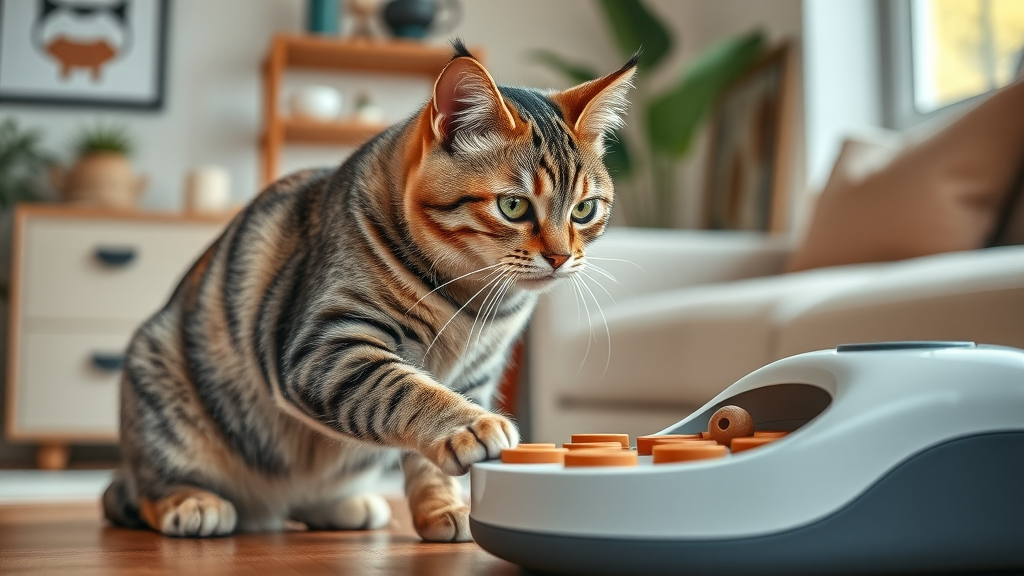
Play with Your Cat: Activities to Prevent Boredom in Indoor Cats
Nothing beats the power of play when it comes to preventing cat boredom . Regular interactive play sessions mimic the stalking, pouncing, and hunting behaviors that cats would naturally perform outdoors. Introducing a handful of favorite cat toys and regularly mixing things up with new challenges can turn even the most sedentary indoor cat into an engaged, energetic, and joyful pet.
Studies show that dedicated playtime promotes not only healthy minds but also healthy bodies. From cat tunnels and wands to laser pointers and puzzle feeders, there’s an ever-growing market of interactive toys designed with feline fun in mind. Best of all, play sessions help solidify the bond between cat and owner—offering a vital way to observe your pet for changes in mood or behavior and respond before boredom spirals out of control.
Top cat toys, games, and exercises for bored cats
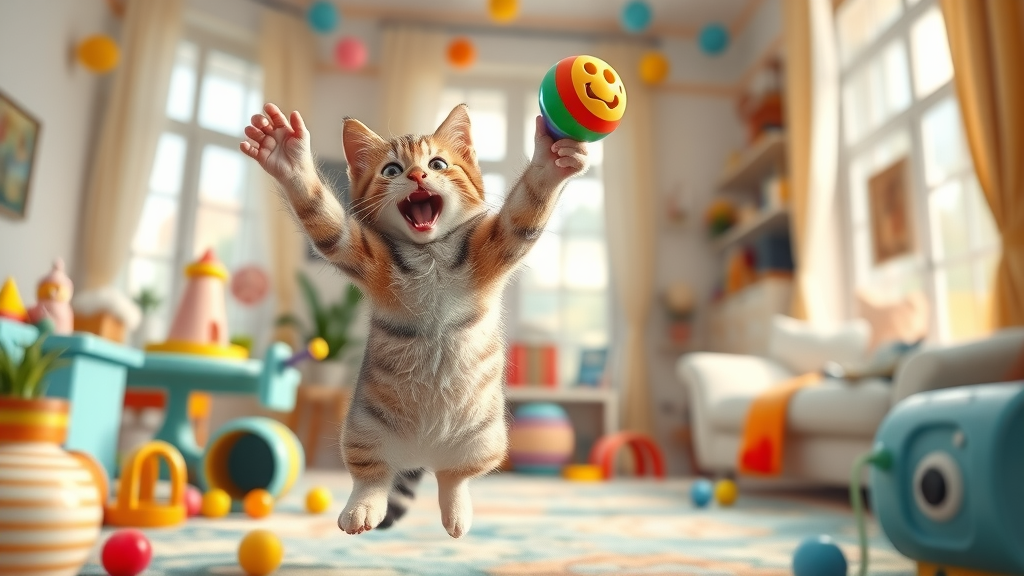
- Interactive wands
- Laser pointers
- Cat tunnels
- Hide-and-seek games
- Puzzle feeders
These toys allow your cat to move, chase, and interact—offering an outlet for their energy and a way to express their natural instinct . Make sure to keep playtime varied and rotate toys so boredom doesn’t set in.
How much playtime does your indoor cat need?
Experts recommend at least two to three dedicated play sessions per day, each lasting 10-15 minutes. However, the exact amount may vary based on your cat’s age, breed, and personality. Kittens and young adults may need even more play to stay happy, while seniors may prefer gentler, shorter activities. Pay close attention to your cat’s energy —if they walk away or seem tired, let them rest. If they can’t get enough, it might be time to add new interactive toys, puzzle feeders, or play routines to keep things fresh.
Puzzle Feeders and Cat Toys: Tools to Help Prevent Cat Boredom
Innovative feeding solutions and engaging cat toys are game-changers for cat parents looking to prevent boredom . Puzzle feeders add an element of challenge to mealtime, encouraging your cat to “hunt” for dinner and keeping their minds sharp. Likewise, rotating a collection of safe, stimulating toys ensures there’s always something new to explore, no matter how many hours your indoor cat spends inside.
Both puzzle feeders and a wide variety of cat toys can dramatically cut down on destructive behavior and help redirect a bored cat’s energy into healthy outlets. Look for toys designed to mimic prey—mice, birds, or bugs—so your feline friend can practice their hunting skills. Simple cardboard boxes or DIY tunnels can also provide hours of entertainment without breaking the bank.
Choosing safe and stimulating cat toys for your indoor cat
Safety is just as important as fun. When choosing toys and feeders, opt for designs made from non-toxic materials, free from parts that could break off and become choking hazards. Every toy should be suited to your cat’s size, age, and preferences. Check toys regularly for wear and replace any that show damage.
Consider introducing puzzles with varying difficulty levels to keep your cat’s mind challenged . You don’t need dozens of toys at once—regularly rotating a smaller selection keeps things new and exciting. Don’t forget the power of simple household items, like crumpled paper or safe plastic rings, to provide additional mental stimulation at zero cost.
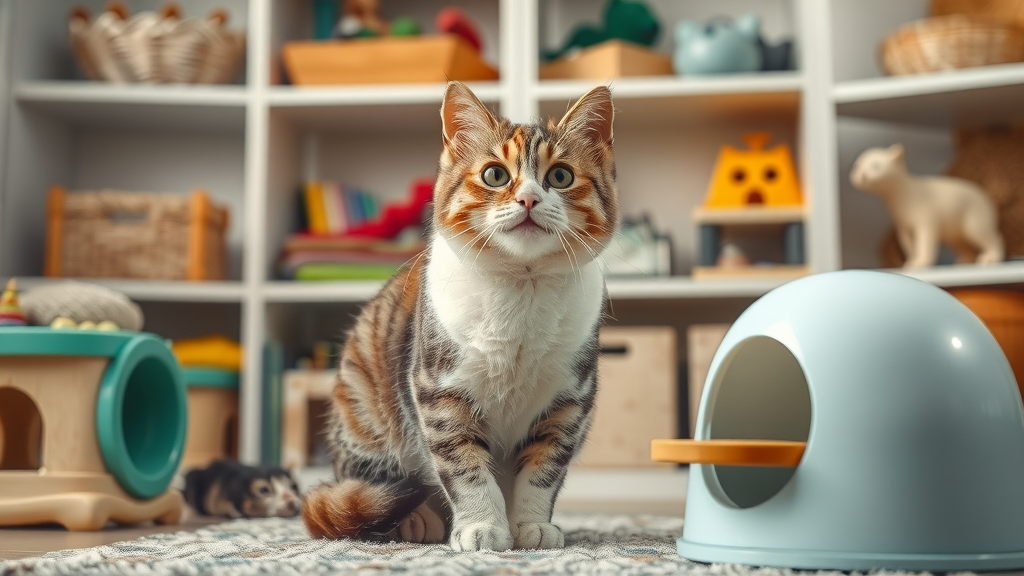
Creating an Enriching Indoor Environment for Indoor Cats

Transforming your home into a feline wonderland doesn’t have to be expensive or complicated. The best enrichment ideas often start small—with cardboard boxes, paper bags, or homemade puzzle feeders. However, investments in cat trees , window perches, and interactive features provide your indoor cat with endless opportunities to climb, explore, and watch the world go by.
The key is balance: offer both vertical and horizontal spaces for your cat to investigate. Keep their curiosity alive by moving enrichment items occasionally, introducing new hiding places, or growing cat-safe plants. Even the act of rearranging your furniture can offer new vantage points and restore excitement to your cat’s everyday landscape.
Best enrichment ideas: Cat trees, window perches, and interactive features
If you’re building your own enrichment plan, start with the essentials: a solid, tall cat tree for climbing and scratching, window perches for sunbathing and bird watching, and a few interactive items like tunnels or shelves. Space permitting, add a play area with rotating toys and a puzzle feeder. The rewards—a more active, engaged, and less bored cat—make every dollar and minute invested worthwhile.
| Enrichment | Approximate Cost |
|---|---|
| Cardboard boxes | Free |
| DIY puzzle feeders | $5-$15 |
| Window perches | $15-$30 |
| Cat tree/towers | $50+ |
Setting routines to prevent boredom for your indoor cat
Structure is crucial for preventing cat boredom . Cats thrive on predictable routines—scheduled meals, daily play at set times, and regular grooming sessions. Begin and end the day with interactive play, and adjust the environment weekly to introduce new experiences. These small but consistent changes help maintain your indoor cat’s interest while ensuring their needs for exploration and adventure are met. You’ll quickly see positive changes in mood, energy, and even your cat’s relationship with the rest of the family.
Is My Indoor Cat Sad or Bored? Recognizing the Warning Signs
Boredom and sadness in cats often go hand in hand. Behavior changes such as hiding, loss of interest in favorite activities, and increased vocalizations aren't just signs of cat boredom —they can signal the onset of depression. If you notice persistent mood shifts or your cat stops responding to formerly enjoyable routines, take action quickly by ramping up enrichment and, if needed, consulting your veterinarian.
"Boredom can lead to sadness or even depression in cats—pay close attention to mood changes," advises Dr. Mia Torres, feline psychologist.
People Also Ask
How do I know if my indoor cat is bored?
- Look for patterns like excessive sleep, destructive behavior, over-grooming, loss of appetite, or increased vocalization. Any sudden behavioral changes can be a red flag your indoor cat is bored.
Do cats get bored being in the house all the time?
- Yes, if cats lack stimulation, they can get bored indoors. Routine changes, new challenges, and regular play keep indoor cats engaged.
Do cats get sad being inside all day?
- Some cats may act depressed if unstimulated—offering mental enrichment and play reduces sadness and keeps indoor cats healthy.
How do I keep my indoor cat from getting bored?
- Offer a variety of toys, daily play, enrichment activities, and interactive feeding tools to prevent cat boredom indoors.
Frequently Asked Questions About Cat Boredom and Indoor Living
- How many hours a day should I play with my indoor cat?
- Are certain cat breeds more prone to boredom?
- Can an indoor cat ever be too stimulated?
- What are the best toys for mental stimulation?
Key Action Steps: How to Prevent Boredom in Indoor Cats
- Schedule 2-3 interactive play sessions daily
- Rotate toys to maintain novelty
- Provide window views and vertical spaces
- Incorporate puzzle feeders and new enrichment regularly
- Observe behavior and adjust routines
Every Cat Parent's Toolkit: Resources to Enhance Your Indoor Cat’s Life
| Tool/Resource | Purpose |
|---|---|
| Feline-friendly apps | Schedule playtime, enrichment |
| Puzzle feeder brands | Combat boredom, mental activity |
| Cat tree retailers | Support climbing, exercise |
| Enrichment guides | Tips for cat mental stimulation |
Ready to Prevent Cat Boredom? Subscribe for Exclusive Cat Care Tips

- 🐾 Love pets as much as we do? Get the best tips, treats, and tail-wagging stories delivered monthly. 👉 Subscribe to our newsletter and never miss a bark or purr!
- 📧 One email. All the value. Join thousands of pet parents who get our monthly roundup of pet care tips, product reviews, and giveaways.
Conclusion
Start today: add play sessions, rotate enrichment, and watch for signals of boredom. Your indoor cat’s happiness is in your hands—make every day an adventure!
To further enhance your understanding of indoor cat boredom and discover effective strategies to keep your feline friend engaged, consider exploring the following resources:
- “Boredom Busters: Tips to Help Keep Your Indoor Cat Happy” ( vetstreet.com )
This article offers practical advice on creating an enriching environment for indoor cats, including the use of perches, climbing systems, and interactive play to mimic outdoor experiences.
- “Is Your Indoor Cat Bored?: 12 Ways to Prevent Boredom” ( petplace.com )
This resource provides a comprehensive list of strategies to prevent boredom in indoor cats, such as providing window access, scratching posts, and scheduled playtime to keep your cat mentally and physically stimulated.
By implementing the insights from these articles, you can create a more stimulating and fulfilling environment for your indoor cat, ensuring their happiness and well-being.
 Add Row
Add Row  Add
Add 




Write A Comment